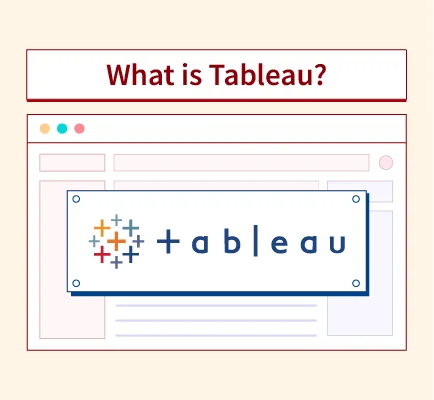Machine learning involves training models to recognize patterns in data by adjusting their internal parameters. During training, the model learns to minimize the difference between its predictions and the actual outcomes, improving its accuracy over time. A critical part of this process is exposing the model to the entire dataset multiple times to ensure it learns effectively.
This is where epochs play a role. In machine learning, an epoch refers to one complete pass of the entire training dataset through the learning algorithm. It ensures the model has multiple opportunities to learn from every data point, refining its predictions over time. Understanding epochs helps to fine-tune the training process for better performance.
What is an Epoch in Machine Learning?
An epoch in machine learning is one complete pass through the entire training dataset by the learning algorithm. During an epoch, the model processes every data point, updating its parameters to improve performance. However, training typically requires multiple epochs to help the model learn patterns effectively.
The number of epochs is a hyperparameter—it must be chosen carefully. Too few epochs can lead to underfitting, meaning the model hasn’t learned enough, while too many can cause overfitting, where the model performs well on training data but poorly on new data.
Example of an Epoch
To better understand the concept of an epoch, let’s use a simple example: training a model to classify fruits.
Imagine we have a dataset with images of apples, bananas, and oranges. During one epoch, the model processes all the images—learning to recognize key features of each fruit, such as shape and color. As it moves through the entire dataset, it adjusts its internal parameters, like weights, based on how accurately it classifies each fruit.
If we only use one epoch, the model might not learn enough since it only sees the dataset once. By using multiple epochs, the model repeatedly reviews the same images, refining its parameters and improving accuracy with each pass. This way, it gets better at recognizing the fruits over time.
What Is Iteration and Their Role in an Epoch
An iteration in machine learning refers to a single update of the model’s parameters, based on a small portion (or batch) of the training data. In practical training processes, the entire dataset is usually too large to process at once, so it is divided into smaller batches. Each time the model processes one batch and adjusts its parameters, it completes one iteration.
For example, if a dataset contains 1,000 images, and we use a batch size of 100, the model will need 10 iterations to complete one epoch (i.e., processing the entire dataset once). Each iteration involves:
- Forward pass: The model makes predictions for the current batch.
- Loss calculation: It measures the error between predictions and actual values.
- Backpropagation: The error is used to update the model’s parameters.
Iterations and Their Role in an Epoch
Since multiple iterations make up one epoch, the model gets several opportunities to adjust its parameters within a single epoch. This division into batches ensures the model updates incrementally, reducing the computational load and stabilizing the learning process.
What Is a Batch in Machine Learning?
A batch in machine learning is a small, manageable subset of the entire training dataset. During training, instead of processing the entire dataset at once, the model processes data in these smaller batches. Each batch allows the model to update its parameters incrementally, making the training process more efficient and stable.
Why Use Batches?
- Computational Efficiency: Processing the entire dataset at once can be computationally expensive, especially for large datasets. Using smaller batches reduces the memory and processing power required.
- Faster Learning: By updating the model’s parameters with each batch, the model learns incrementally and improves gradually throughout an epoch.
- Stabilizing the Learning Process: Batches help prevent erratic updates that could occur if the entire dataset were used at once, especially with noisy or complex data.
For example, if we have 1,000 fruit images in our dataset and set the batch size to 100, the model will process the dataset in 10 batches per epoch. Each batch is fed through the model, which makes predictions and updates its parameters before moving to the next batch.
Difference Between Epoch and Batch in Machine Learning
| Aspect | Epoch | Batch |
| Definition | One complete pass through the entire dataset. | A small subset of the dataset used for one update. |
| Purpose | Ensures the model learns from the entire dataset. | Enables efficient parameter updates during training. |
| Computation | Processes the whole dataset once. | Processes only a portion of the dataset at a time. |
| Impact | Helps the model improve gradually across multiple passes. | Allows incremental updates for smoother learning. |
| Relation | Composed of multiple batches. | Multiple batches make up one epoch. |
| Example | 1 epoch = 10 batches (with 1,000 images and batch size of 100). | 1 batch = 100 images processed in one iteration. |
Why Use More Than One Epoch?
Using only one epoch might not be enough for a model to learn effectively. Since each pass over the dataset only provides limited learning, multiple epochs are typically needed to improve the model’s performance gradually. Here’s why:
- Refining the Model’s Understanding:
- In the first few epochs, the model only learns basic patterns in the data.
- Additional epochs allow it to refine its understanding by reducing errors and improving predictions.
- Handling Complex Patterns:
- Some datasets contain complex patterns that require multiple exposures for the model to grasp fully.
- Multiple epochs ensure the model identifies both general trends and subtle features in the data.
- Adjusting Parameters Gradually:
- The model’s parameters, such as weights, need incremental updates over time. Multiple epochs help distribute these updates evenly, ensuring more stable learning.
- Improving Generalization:
- Multiple epochs help the model generalize better by repeatedly learning from the data, improving its ability to perform well on new, unseen data.
However, using too many epochs can result in overfitting, where the model performs well on the training data but poorly on new data. To avoid this, it’s essential to monitor the model’s performance during training and stop training when it stops improving—often done using techniques like early stopping.
Advantages and Disadvantages of Using Epochs in Machine Learning
Advantages
- Systematic Learning: Multiple epochs allow the model to learn progressively, improving accuracy with each pass through the dataset.
- Better Parameter Updates: With each epoch, the model fine-tunes its parameters, making incremental improvements for better predictions.
- Handling Complex Patterns: For complex datasets, using multiple epochs ensures that the model identifies both major trends and subtle patterns over time.
- Enhanced Generalization: Repeated exposure to data helps the model generalize better, improving its performance on unseen data.
Disadvantages
- Risk of Overfitting: Training with too many epochs can lead the model to memorize the training data, reducing its ability to generalize to new data.
- Training Time Increases: Each additional epoch adds to the total training time, which can be computationally expensive for large datasets.
- Diminishing Returns: After a certain number of epochs, further training may not yield significant improvements, making it inefficient to continue.
- Requires Tuning: Finding the optimal number of epochs can be tricky, and improper tuning may lead to underfitting or overfitting.
Applications of Epochs in Machine Learning
Epochs play a crucial role in various machine learning tasks, ensuring that models are trained effectively by repeatedly learning from data. Below are some practical applications:
- Image Recognition: In tasks like identifying objects or faces in photos, models such as Convolutional Neural Networks (CNNs) require multiple epochs to accurately capture features like edges, colors, and textures from images.
- Natural Language Processing (NLP): For text-based tasks such as language translation, sentiment analysis, or chatbots, models like Recurrent Neural Networks (RNNs) or Transformers need multiple epochs to understand context and grammar patterns effectively.
- Speech Recognition: Speech-to-text models learn patterns from audio data over many epochs, gradually improving their ability to distinguish different words and accents.
- Recommendation Systems: Models like collaborative filtering use epochs to fine-tune recommendations based on user behavior, refining predictions with each pass through the training data.
- Autonomous Vehicles: Self-driving cars use machine learning models trained with multiple epochs to recognize road signs, obstacles, and lane markings accurately.
Conclusion
Epochs are a critical concept in machine learning, playing a key role in ensuring effective model training. They represent complete passes through the training dataset, allowing the model to learn and refine its predictions over multiple iterations. Using the right number of epochs helps balance learning—too few may lead to underfitting, while too many can cause overfitting.
Throughout this article, we explored the definition of epochs, how they differ from iterations and batches, and their importance in various machine learning applications. By understanding how to use epochs effectively, practitioners can better train models that generalize well to new data and perform efficiently in real-world tasks.
Frequently Asked Questions on Epoch
1. Why use epochs in machine learning?
Epochs are essential to allow the model multiple opportunities to learn from the data. A single pass through the dataset might not provide enough learning, but multiple epochs help the model improve its predictions and refine parameters incrementally, ensuring better performance.
2. What is an epoch in TensorFlow?
In TensorFlow, an epoch represents one complete iteration over the entire training dataset. TensorFlow allows users to define the number of epochs when fitting a model, determining how many times the dataset will be fed through the learning algorithm to update the model’s weights.
3. What is the difference between an epoch and an iteration?
An epoch refers to one complete pass through the entire dataset, while an iteration refers to a single update of the model’s parameters based on a subset (batch) of the data. Multiple iterations make up a single epoch when using mini-batch training.
4. What is an epoch in a neural network?
In neural networks, an epoch is used to expose the model to all available training data. Each epoch provides an opportunity to fine-tune the weights of the network, gradually reducing the error and improving the network’s ability to make accurate predictions.


